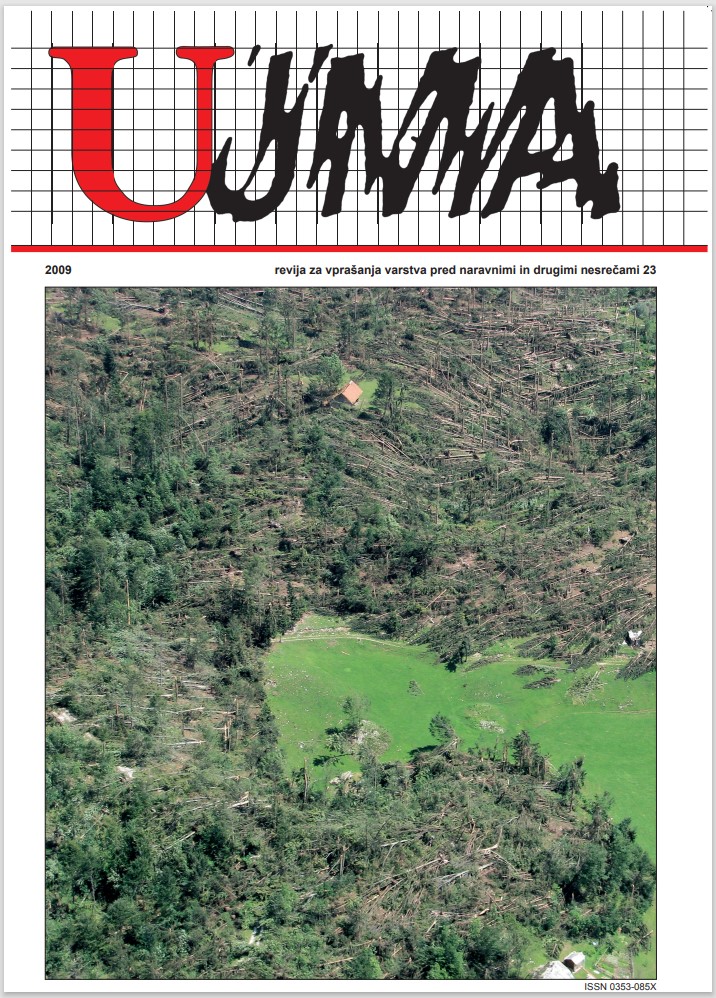THE USE OF CLUSTER MUNITIONS IN KOSOVO AND ALBANIA; HUMANITARIAN CONSEQUENCES OF ITS USAGE AND ITS REMOVAL
Abstract
During the NATO air attacks in 1999, according to NATO, at least 1,393 cluster bombs were dropped on 333 locations in Kosovo. Three types of cluster munitions were used: BLU- 97, (R)BL-755 and Mk-118. Cluster explosives were also used by the then Yugoslavian army artillery to fire on Albanian rebels in the national territory of Albania. It is known that in some cases the Yugoslavian air force also used cluster bombs. Certain information on the use of cluster bombs was reported from NATO to the Mine Action Co-ordination Centre (MACC) in Priština only after several interventions. This information is not complete but in part it has contributed to faster implementation of the cluster bomb clearance process (Battle Area Clearance/ BAC). Also during the war cluster bombs claimed a large number of victims among civilians either due to inadequate usage or as unexploded ordnance (UXO). After the war the number of accidents, which included mainly children, has increased. In comparison with anti-personnel mines, cluster bombs pose a 25% greater threat to civilians and as much as 600% more than remaining UXO. The cluster bomb clearance process in Kosovo can be divided into several phases: the collection of data and the urgent BAC phase; the complex BAC phase; the surface BAC phase; the depth BAC phase; and the local capacity phase. The most important step in the implementation of BAC was the decision by MACC (in the first half of 2000) to first clear the surface of all the polluted areas and then to continue with the in-depth clearance. This decision drastically diminished the number of casualties among the local population. According to NATO’s evaluation, 5% of cluster bombs remain unexploded, whereas the MACC’s field personnel estimation is that this number ranges between 7 -10%. This percentage is highly dependant on the location where the cluster bombs were dropped and in certain cases reached even 30%; thus the realistic number may supposedly be in the range between 10–15%. The humanitarian programme in Kosovo is also characterized by a great number of working accidents; however, the number of accidents caused by cluster bombs is relatively low, although one ended up causing a death.
References
Bizjak, M., 2000/2001. Mine in tehnike razminiranja, uporabljene na Kosovu. V: Ujma 14–15, 447–451.
Bizjak, M., 2008. Vojska in protiminsko delovanje v svetu. V: Ujma 22, 300–315.
Cave, R., Lawson, A., Sherriff, A., 2006. Cluster Munitions in Albania and Lao PDR. United Nations publications, Geneva.
Filippino, E., 2005. Mine Action: Lessons and Challenges, Geneva.
Handicap International, Fatal Footprint, 2006. The Global Human Impact of Cluster Munitions. Preliminary report, Bruselj.
ICRC, 2001. Cluster bombs and landmines in Kosovo, Explosive remnants of war, Geneva.
Lardner, T., 2007. Land Release: A guide for mine and ERW affected countries. Geneva.
Maslen, S., 2007. A Guide to Mine Action and Explosive Remnats of War. Geneva.
Mine Action Support Group, Conference, Priština 22. in 23. oktober 1999, delovno gradivo.
Moves, R., 2007. Cluster munitions in Kosovo, Analysis of use, contamination and casualties. Landmine action, London.
Moyes, R., 2006. Foreseeable harm, The use and impact of custer munition in Lebanon: 2006. Landmine action, London.
Orifici, D., 2007. A Guide to Cluster Munitions. Geneva.
Orifici, D., 2007. A Guide to Mine Action and Explosive Remnants of War. Geneva.
Thompson, H., 1999. Landmine and Unexploded Ordnance in Kosovo.
Yellow Killers, the impact of cluster munitions in Serbia and Montenegro, NPA 2007. Elektronsko dopisovanje, pogovori in drugo
Steve, Saunders 2001–2006 - EOD Operations Officer OKPCC/Kosovo.
Stotnik Andy Klee, poveljujoči britanske EOD enote MNB-C– neformalni pogovori od januarja do junija 2000.
Avtorjevi osebni zapiski in dnevnik, ki ga je vodil kot operativni oficir MACC od oktobra 1999 do januarja 2001.
Downloads
Published
Issue
Section
License

This work is licensed under a Creative Commons Attribution-NonCommercial-NoDerivatives 4.0 International License.
The articles are made available to the public under Creative Commons Attribution-NonCommercial-NoDerivatives 4.0 International (CC BY-NC-ND 4.0).


